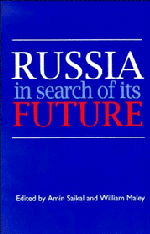7 - From Soviet to Russian Foreign Policy
Published online by Cambridge University Press: 03 May 2011
Summary
Dean Acheson once commented of Great Britain that it had lost an empire without finding a role. The same could easily be said of Russia. The erosion of Communist Party dominance during the later years of Gorbachev's rule, culminating in the disintegration of the Soviet Union itself, both undermined the ideological basis of Moscow's foreign policy, and radically restructured the world within which the Russian Federation now lives. As a result, Russian foreign policy in a number of ways differs radically from that of the Soviet Union. However, there are continuities as well as discontinuities, not least among the personnel responsible for policy advising and implementation. Our aim in this chapter is to identify these points of continuity and discontinuity, and to show how they are shaping Russia's responses to some of the pressing international issues in the post-Cold War world.
At the outset, one must recognise that it is necessary to study ‘Russian foreign policy’ not simply as a set of formal doctrines, but also as a pattern of behaviour in specific situations. The idea of ‘policy’ is not nearly as straightforward as upon initial inspection one might suspect. Lasswell and Kaplan, by defining policy as ‘a projected program of goal values and practices’, capture one important sense of the term, namely statements by actors about courses which they propose to follow.
- Type
- Chapter
- Information
- Russia in Search of its Future , pp. 102 - 122Publisher: Cambridge University PressPrint publication year: 1994



